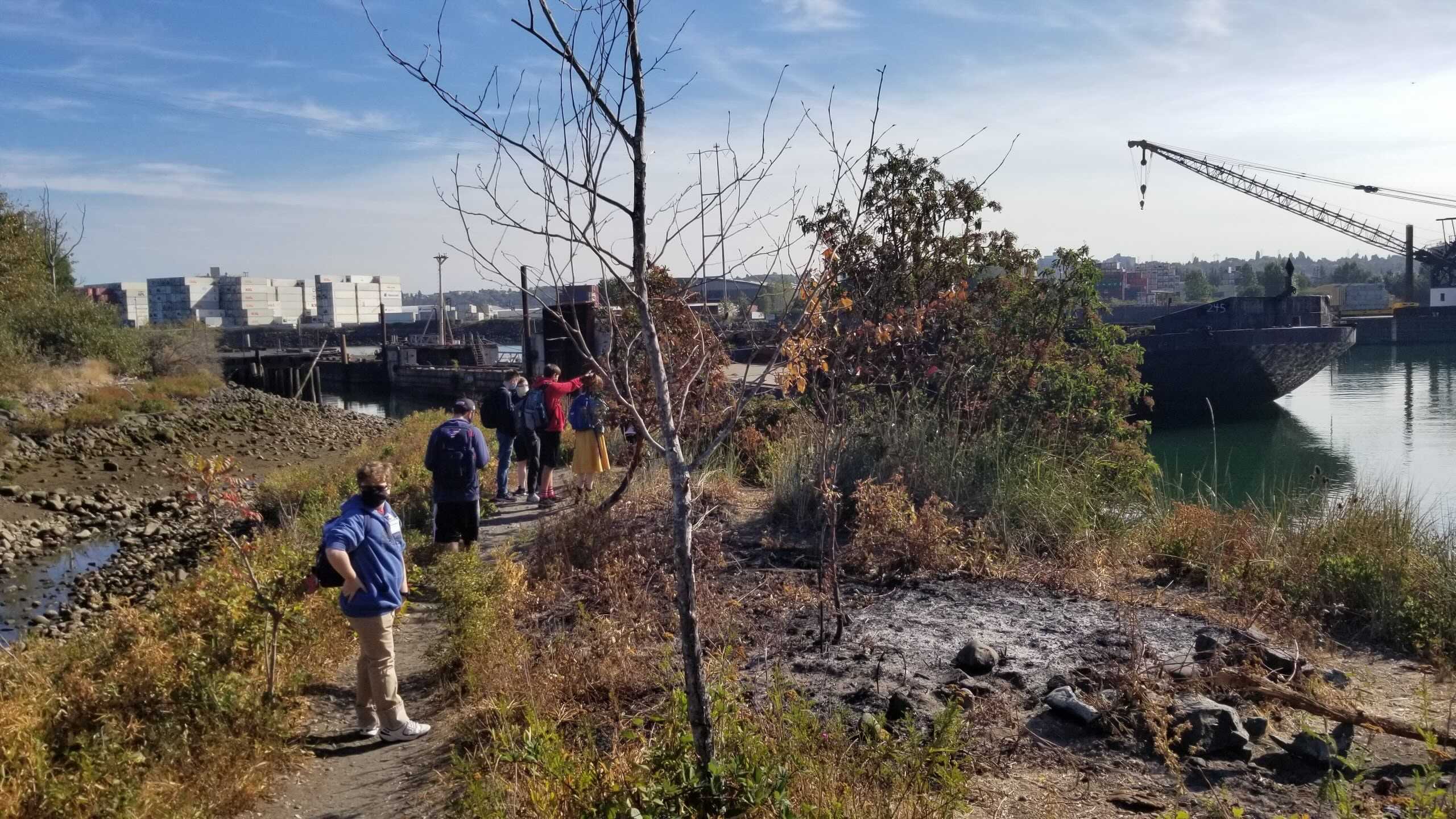
Inspired by Highline’s Aviation High School and the New York Harbour School, Maritime High School is designed to address two problems the region faces: the coming “Silver Tsunami” and racial equity. The “Silver Tsunami” refers to a significant portion of the maritime workforce preparing to retire in the next decade. In fact, the maritime industry is projecting a shortage of more than 150,000 mariners by 2025. “These are unique positions,” said Ryan Calkins, commissioner for the Port of Seattle. “They require very particular career development.”
Furthermore, the region’s maritime workforce has historically failed to reflect the diversity of the community. “There is a gap in any sort of racial equity in the maritime industry,” added Jake Beattie, executive director at Northwest Maritime Center. “It’s literally 96 percent white. When you think about the communities around the Duwamish, they are not 96 percent white. That feels like a problem—a huge injustice.”
With these two issues in mind, representatives from the collaborating organizations set out to create a new educational opportunity for high school students in the region. Though Maritime High School is part of the Highline district, the school serves the entire region and welcomes students who do not reside in the district as well. As plans for the school materialized over the past four years, it was particularly important to include stakeholders around the community to provide the tools necessary for students to succeed through fundraising and partnerships.
“I’ve had conversations with over 100 community organizations and individuals who reached out to us or are in our community and network who found out about Maritime High School and are excited about being involved, which is critical for project-based learning,” added Stephanie Burns, program director at Maritime High School. “Those individuals… bring in the expertise and authentic connection to the industry sector perspective, which I think is key for that authenticity and how we make sure our students understand how this work is connected beyond the classroom.”
Steered by Principal Tremain Holloway, Maritime High School is intentionally designed to be a project-based learning school. By focusing on deeper learning and immersive experiences, the school aims to prepare students for what they may face in the workforce. Students will be in the floating classroom—a facility on the Northwest Maritime Center’s dock used as the school’s headquarters—twice a week; engage in fieldwork experience twice a week; and participate in asynchronous learning on Fridays.
To create the school’s educational model, Highline Public Schools (a member of the League of Innovative Schools) relied heavily on partners such as the Northwest Maritime Center, which has decades of experience providing educational maritime experiences to students. Furthermore, obtaining boats to use for classrooms and excursions isn’t realistic of a typical public school district budget, so the Port of Seattle and the Northwest Maritime Center committed to supplying additional funding required to sustain the high school’s ambitious and innovative approaches.
“The design of the school exists in perpetuity and partnership with not only Northwest Maritime Center but the Port of Seattle and Duwamish River Cleanup Coalition,” said Mia Mlekorav, a humanities teacher at Maritime High School. “They are core partners in this endeavor because the district can’t sustain the types of connections and resources that these partners can.”
“It comes back to sustainability,” continued Joanna Rodriguez, a STEM teacher at the school. “We want to make sure that this program lasts and survives beyond what we are starting now.”

Maritime High School students in their floating classroom participating in a hands-on class activity. This image is courtesy of Mia Mlekarov, humanities teacher at Maritime High School.
Each Maritime High School student chooses an educational program depending on their interests. The courses will provide students with a fundamental knowledge of the maritime industry through lessons and hands-on learning experiences, and prepare them for any path they take after graduation. Looking toward the future, students will also participate in research projects to examine the climate change crisis and understand their own role in sustainability efforts.

Maritime High School students on an excursion around the Northwest Maritime Center’s dock. This image is courtesy of Mia Mlekarov, humanities teacher at Maritime High School.
“Any student that graduates from Maritime High School will graduate ready for the future that they choose, including college or a maritime academy,” added Mlekarov. “We want them to have a nuanced understanding of all the pathways that are out there, but they’ll be ready for anything depending on what they want to do.”
Although the trajectory of the inaugural class’s 35 freshmen is yet to be seen (the school only recently opened its doors on September 2), the partnering organizations are committed to championing the school’s diverse community of learners by fostering an environment of belonging and purpose throughout their educational experience.
“There is a need for not just removing barriers but creating a welcoming invitation to participate in maritime activities,” Beattie said.
To learn more about Maritime High School, follow the school on Twitter at @TheMaritimeHS and visit maritime.highlineschools.org.
You can also read more about Highline Public Schools in their Innovation Portfolio.